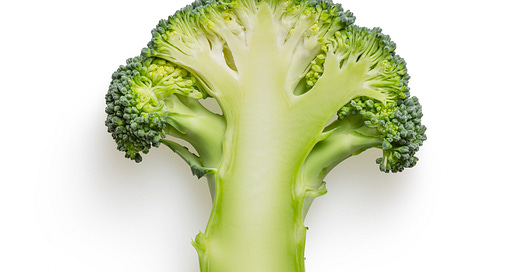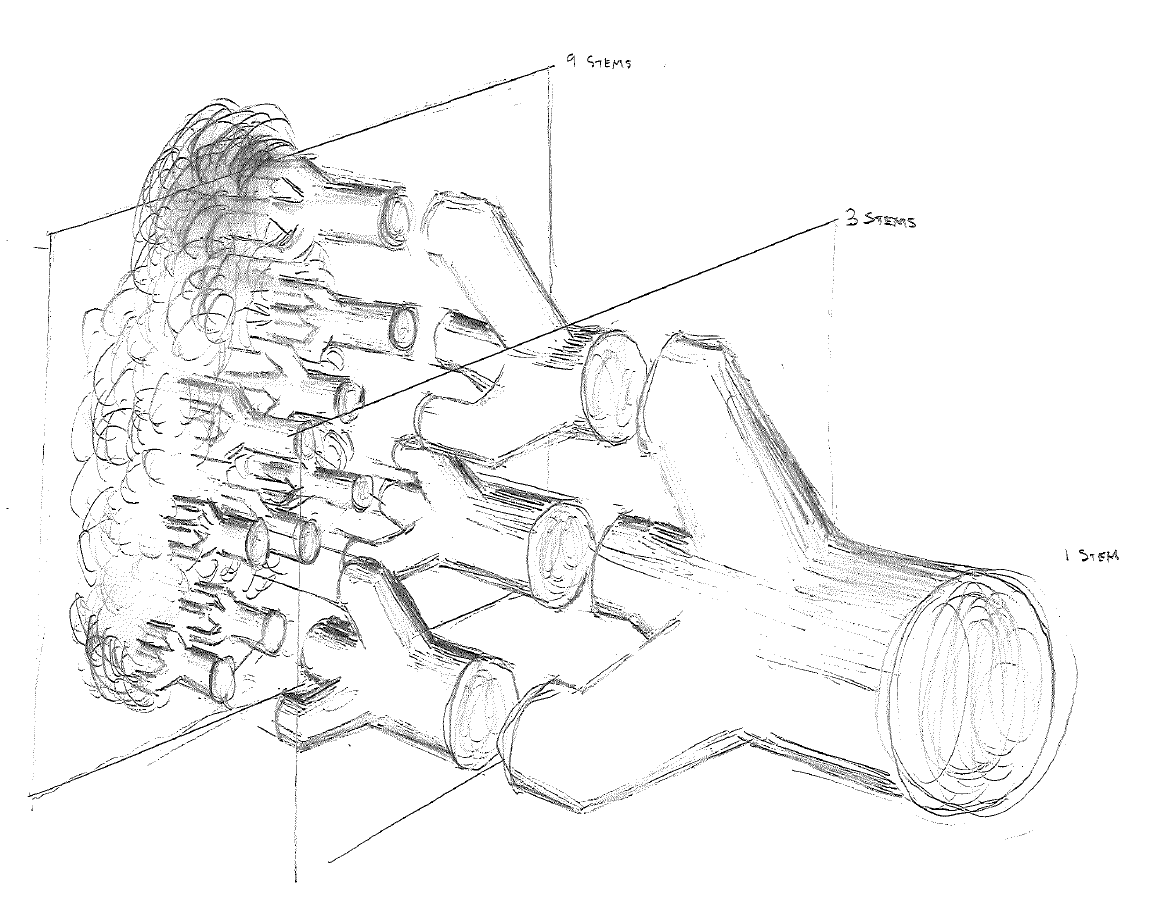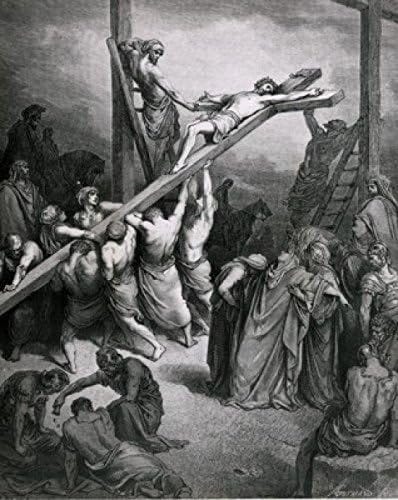TL;DR The greatest secret in history is the lost connection between finance, religion, and drugs. This secret can be visualized with an allegory—in this case, a head of broccoli. The idea is that main broccoli stems fork into many smaller stems the closer you get to the florets. The relationship between big stems and many smaller stems illustrates the illusory nature of our identities as individuals.
Saying that it’s 150 miles to Boston and saying that it’s 2 hours to Boston are two ways of relaying the exact same piece of information. Time and distance are interchangeable. When you really think about that, the implications are mind-bending.
An audience sitting in a concert hall listening to Beethoven’s 9th, in any given moment, can only hear only the note of the symphony being played in that moment. But as he composed it, Beethoven wrote his symphony down on pages of sheet music. With a big enough sheet, you could visually behold his whole piece of music at once, instead of having to take it in one note at a time like you do during a live performance. For practical purposes, sheet music is a transformation of the temporal dimension, which we measure with a stopwatch, into a physical dimension, which is measurable with a ruler.
Keep this interchangeability of time and distance in mind during the following thought experiment…
I made a rudimentary sketch of a head of broccoli, shown below. Imagine this clump of broccoli laying on your kitchen cutting board at home. Now, in your mind's eye, take a knife and make three slices so that you have three cross-sections. In my sketch, there is one stem in the first cross-section. And that stem forks into the three smaller stems by the second cross-section. By the third cross-section, each of those three smaller stems has forked into three more even smaller stems, bringing the grand total to nine.
Imagine this sketch of sliced broccoli is analogous to a page of sheet music. Let’s now flip our perspective to match people in a concert hall listening to one note at a time. In other words, let’s swap out the lengthwise physical dimension of the broccoli and replace it a temporal dimension. Instead of measuring it with a ruler, we are now measuring it with a stopwatch. We could say at at 1 o’clock we have a single stem. By 2 o’clock, we have three stems. And by 3 o’clock, we have nine stems.
To an observer trapped inside time, like symphony audience, there are 1, 3, or 9 individual stems—depending on when they’re looking. They wouldn’t be able to observe the whole head of broccoli, which exists outside of time. To them, it would come as a surprise to learn that apparently individual stems are actually all connected to each other. Their moment-by-moment status as individual stems is nothing but a trick of the way we perceive time.
I chose a cluster or broccoli for this example, even though it’s a tough to draw, because it’s great visual example of how mother nature works. Living things reproduce when, over time, individuals fork into more individuals through sexual reproduction.
Populations of living things always grow in this exponential way. Compound interest was invented, during the agricultural revolution, to track agricultural activities. It’s a tool that mirrors the way grain seeds or cattle reproduce themselves with an exponential math function. That’s why the taking of interest, or usury, is a common theme in the ancient religions of the world. It’s because the math of finance is an artificial mirror that reflects the structure of broccoli and all other living things.
The ancient religion always warn about finance because the exponential mathematical model can’t account for what happens when there is a plague, a flood, a drought, or a war. The model grows infinitely, while reality does not. That’s why the foundational texts of Judaism, Christianity, and Islam all warn against the use of such a mathematical model.
Human populations, being products of nature, also grow at exponential rates. There are around 8 billion of us on the planet at this moment in history. But if we could swap out history—a dimension we measure with a stopwatch—and replace it with a spatial dimension instead, we would behold all at once the sheet music to the symphony of humanity. From this perspective, some amazing things instantly become obvious...
Our apparent existence as billions of individuals is an illusion created by the way our brains perceive time. The stems in our broccoli analogy seem like distinct individuals in each cross-section. But they’re really part of a broader, connected whole—a whole that is only perceptible when you consider all the cross-sections at once. If we could take the temporal dimension we call history and see it instead as a physical dimension, then all of humanity would look like one very complex, connected shape. Our illusory identities as individuals would be shattered in a single moment of perception because our connections to each other would be visible.
Though we may appear to each other as individuals in any given moment, we’re really all one thing. In this sense, helping your neighbor is really the same thing as helping yourself. This is how you survive your own death—by simply redefining what you consider yourself to be. Many of the stupendous implications of this realization fall within the domain of religion.
Throughout history, some people have realized—through prayer, fasting, mediation, and sometimes even psychedelic drugs—that individual existence is a trick of perception. This is the greatest secret in history. Confusion over whether we’re individuals or a collective drives all the fighting over resources and control that animate the arc of history. Consider the example of Jesus, who volunteered himself for a gruesome execution. He as sure sure that his individual existence was an illusion that he flung it away in a very public demonstration. The political implications of that can’t be overstated. Within a few hundred years, the Roman Emperor himself was forced to bend the knee and accept baptism into the church of Christ. Today, we’re can still feel the shock-wave unleashed by that single act of consummate badassery.
The only way for political authority to control people is to double down on the illusion of individuality. Early Christians were positively delighted to be fed to lions in the Colosseum; they knew their martyrdom would help spread the good word. They employed a strategy beyond the scope of a single human lifetime because they realized they weren’t really the individual humans they appeared to be. Even the legendary might of Rome was powerless in the face of such a strategy.
Today, marketing firms exacerbate and inflame our senses of individuality to sell us more and more junk with each passing year. Making people feel insecure about their individual selves—or that they need to keep up and compete with the Joneses—is the best way to stimulate buying behavior. As a result, our entire civilization is wallowing in misery. All that buying has kept our elite wealthy so well-heeled that they, like the Roman political authorities, would stoop to any level to avoid having the secret get out.
Folks who understand this secret have always found themselves at odds with those who’ve accumulated wealth and power. They’re often forced underground into secret societies because the explosive truth is a direct threat to that wealth and power. The struggle between top-down control by individuals and bottom-up control by collectives is the engine that has driven history. Slaves societies gave way to peasant societies. And peasant societies gave way to employee societies. And now the capitalist model, with its employers and employees, is self-evidently breaking down around us. Who can deny that the time has almost come for the next thing? Only those who hold positions of privilege within the current thing
The next quantum leap forward is long overdue. It’s been blocked for too long by the powerful. Everyone I know is suffering from depression or a crisis of meaning. Abandoning our identities as individuals is the only way forward. We should be turning to our neighbors to help them, because we understand that helping them is really helping ourselves. In recent decades, the opposite has been heavily encouraged by marketing campaigns. It’s time to give all that up and to coalesce, finally, as global community. That’s why I am publishing this newsletter. I believe this idea, which a clump of broccoli helps to analogize, is our only hope. That’s why I’m hoping you’ll help me to spread the word by sharing a link to this newsletter on your socials, or by bending the ears of family and friends in real life. The only way forward is together!






